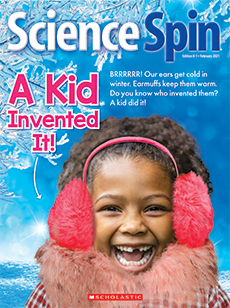February 2023
She Went To Space!
Academic Standards
Reading Objective:
Students will identify ways that astronauts live and explore science in space.
Next Generation Science Standards:
Practice 3: Planning and Carrying Out Investigations
K-LS1: Plants’ Survival Needs
1-ESS1: Space Systems
Vocabulary:
astronaut, spacesuit, experiment
Check comprehension and inspire discussion.
1. How did Jessica get to space?
(in a rocket)
2. What did fruit do in space?
(It floated.)
3. What did Jessica try to grow in space?
(radishes)
4. If you had a birthday party in space, how would you make sure the cake did not float away? What else would be different about a party in space?
(Answers will vary.)
Go online to print or project the Reading Checkpoint.
- The International Space Station is about 250 miles up in the sky.
- The Space Station orbits, or circles, the Earth about 16 times a day.
- On the International Space Station, Jessica loved looking out the windows to see Earth.
- She also liked doing backflips in the air.
Materials: markers, kid scissors, glue sticks, drinking straws, copies of the skill sheet
Overview: Children will make paper rockets and blow through drinking straws to “launch” them, learning about force and gravity.
Directions:
- Before the lesson, set up workstations with markers, scissors, and glue sticks—plus a straw and skill sheet for each child.
- Remind students that Jessica blasted off to the Space Station in a rocket. They will now make their own rockets to blast off!
- Demonstrate how kids will color the two rocket sides, cut them out, then glue the sides together at the edges, LEAVING UNGLUED SPACE AT THE BOTTOM AND IN THE CENTER TO INSERT A STRAW.
- After kids make their rockets, they can insert their straw and blow to launch them. Does the force of a strong blow have the same effect as that of a
soft blow? - Let kids explore gravity, too. Will the rocket stay in the air? Why not? What must they do to keep it up?
